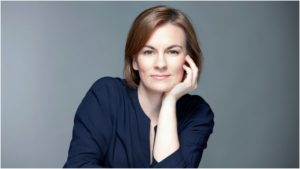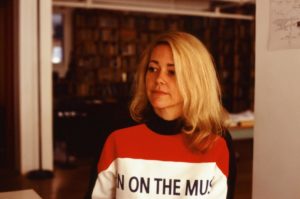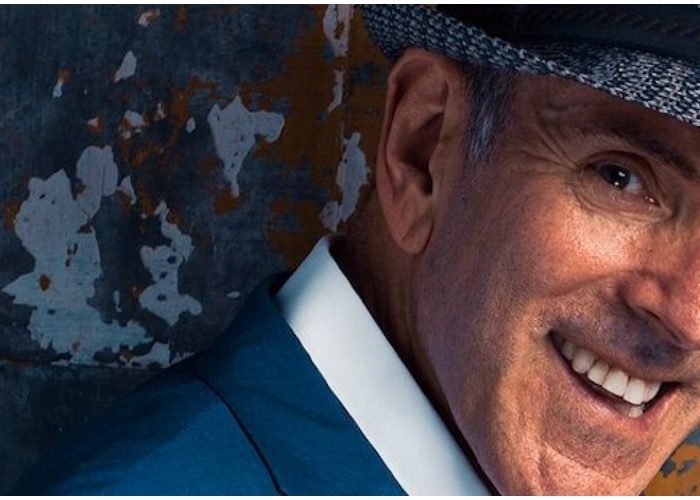
Q & A: Conductor Daniela Candillari on the Importance of ‘The Mother of Us All’
By Jennifer Pyron(photo credit: Damjan Švarc)
Virgil Thomson and Gertrude Stein’s opera “The Mother of Us All” recently made a historical debut at The Met Museum in honor of Susan B. Anthony’s life and women’s suffrage movement. The production celebrates a unique collaboration between the NY Philharmonic, Juilliard, and The Met, which features some of today’s visionary young artists working in opera.
Conductor Daniela Candillari also made her NY Philharmonic debut for this compelling MetLiveArts series and spoke with OperaWire more about her personal artistic journey, the significance of “The Mother of Us All” and exploring the possibilities of finding one’s own voice.
OperaWire: What do you want readers to know about your journey as a female conductor? Is there anything you would tell an aspiring conductor about the emerging process towards becoming professional?
Daniela Candillari: To me my gender is not at the forefront of my mind when it comes to creating art. I grew up in Yugoslavia, part which is now Serbia, and was raised by strong women who paved their own way and did what they thought was right, what they wanted to do and they were all successful. The question of examining the differences between male workforce and female workforce never preoccupied me.
I think of myself as a musician; conducting is what happened in my life because my mentors told me I should do that and so one thing lead to another. The beauty of careers is that sometimes they develop in unexpected ways. When I work with young instrumentalists and singers I talk about the importance of being open towards suggestions from the environment that one is given.
It is important to keep searching and to look for authenticity, which ultimately leads one to finding their own voice. It is also important to always work on the technical side of one’s instrument and find the artistic qualities within the technicality.
OW: What is the significance of performing “The Mother of Us All” at The Met Museum? Can you describe personally how it feels to be part of this historical event?
DC: I am very excited about this historical and unique collaboration between the NY Philharmonic, Juilliard, and The Met Museum. Working with all three world-renowned NY cultural institutions that have been around for so long is surreal.
Before coming to this country, I did not know much about Susan B. Anthony. While studying her life and this piece, I ultimately studied the history of the U.S. with this concept in mind. It opened up a floodgate for me to start researching what this meant for the world and how it was portrayed in my own country.
Also during this time, I examined the dates of a woman’s right to vote in each country and was truly shocked to discover how late in some places this change occurred. It was fascinating for me to deal with this piece in both historical and musical terms because I discovered similarities between its effects. I also look back on the moment when I very first entered The Met Museum to talk about this project and walked into the space. The opportunity to tell this story in this iconic museum of the world is amazing. This performance is a once in a lifetime experience that will stay with me until the end.
OW: What makes this opera most pertinent today? In addition to the story of Susan B. Anthony and the women’s suffrage movement, are there other societal issues that you feel it challenges?
DC: I think what is beautiful about the way this piece is presented is that the audience will have a chance to see different actions from different vantage points. The reduced orchestration in this large open space creates the quality of a chamber opera. The trajectory of Susan B. Anthony’s life gives one a chance to be in this intimate environment and to meditate on the topics that are being presented.
There is one moment in particular that struck me when I first heard Felicia Moore, as Susan B. Anthony, respond to the group of VIPs by singing “you mean, men come first.” This moment made me feel all the emotions of this piece. It raised an important awareness in my mind about how as artists we must be mindful about what it is that we are saying. At the same time I think there are other issues that get discussed in the piece, such as inequality between the classes.
OW: What are your thoughts on Virgil Thomson’s score? Do you gravitate towards a specific musical moment?
DC: This is my first time conducting this piece and when I spoke with colleagues that have performed this work, I discovered that for most this was their favorite opera. The beauty of this piece is that it resembles a patchwork of melodies.
Thomson was inspired by church hymnals and American folk songs, which are both present in this score. There are moments that feel like an extremely precise recitative and there are moments when beautiful melodies arise from the orchestration. For example, the organ might carry the melody or the duet between piano and trumpet. There is a protestant hymn during the opening of the wedding scene and other similar moments where Thomson weaves in extraordinary moments of color.
I find this to be a very text driven opera, so it was important when working with the singers to create the best tempo for them and for this space. A major plus of this large space is that it allows the text to open up and breathe, so the audience can hear it. Perhaps my favorite moment is towards the end of the opera when Susan B. Anthony talks about her life and at the same time addresses the listener with the words “Do you know because I tell you so.”
I guess for me this opens a question of our own asking and listening. The musical simplicity in this moment lets the words sink in and have an honest quality. Thomson is able to connect the quirkiness of characters to the beautiful lyricism and melodies that make this opera so incredibly unique.
OW: How do you feel that Gertrude Stein’s libretto relates to Thomson’s score?
DC: What I understand about Thomson’s process is that he would sit at the piano and speak the text for a long time until he felt he had the right rhythm for it to put towards music. I feel that Thomson’s music supports the text and goes hand in hand with Stein’s libretto. Essentially, the music lets the text take one on their own journey without superimposing what the text is saying.
The multiple layers of the libretto allow for certain words and moments to be understood as the listener perceives them. One can follow their own interpretation of this piece and the music will not impose one opinion over another. It has its own meaning for each individual and this is what makes it most beautiful.



